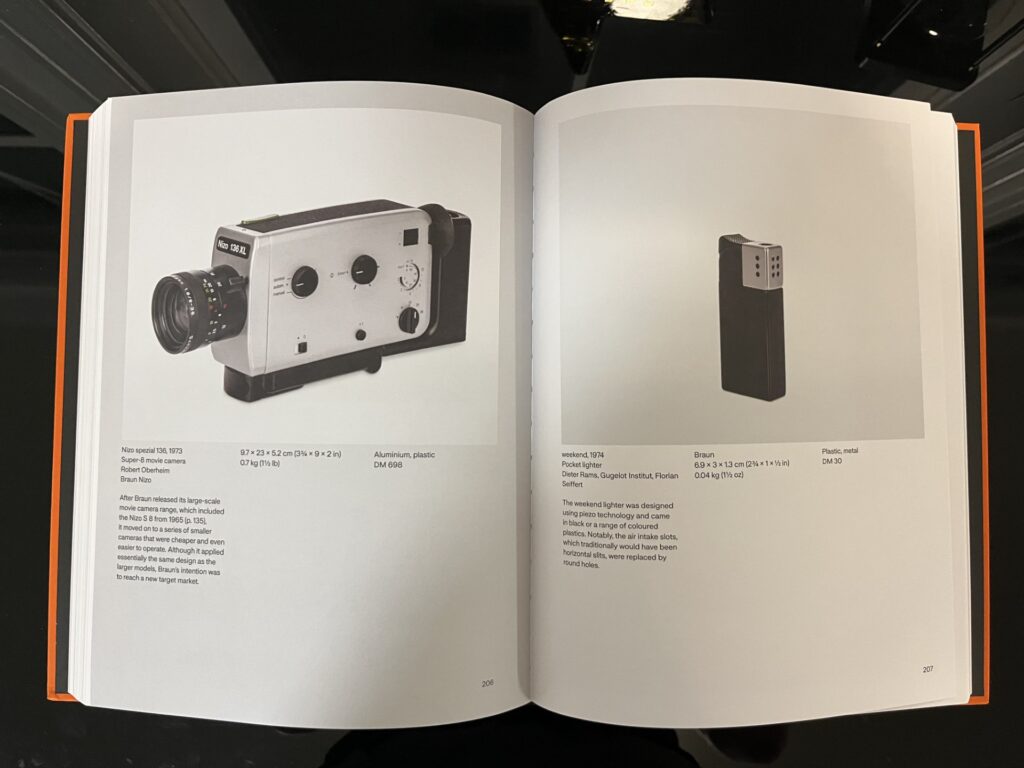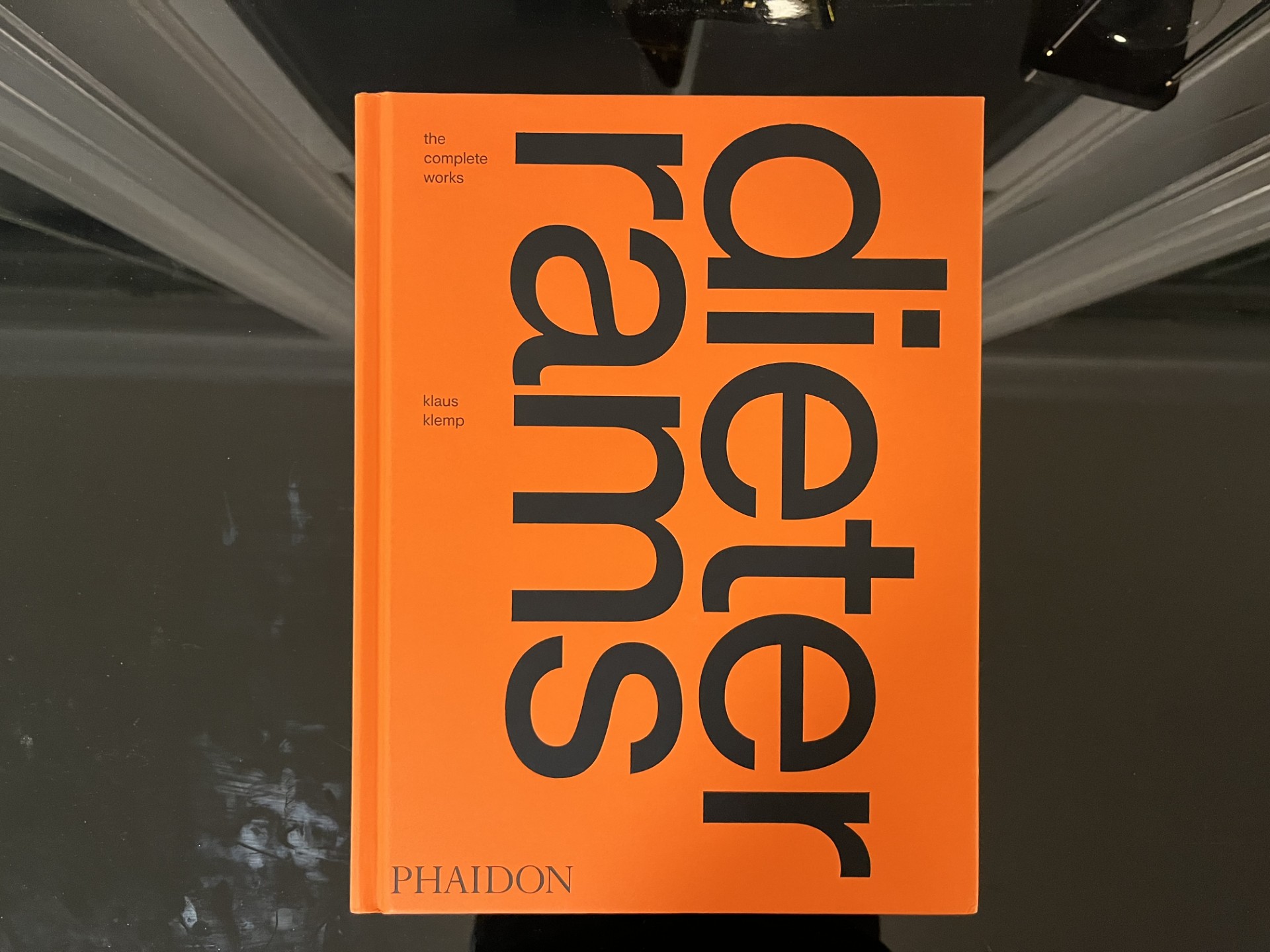Dieter Rams is a name synonymous with great design, and his work has influenced many modern designers. “Dieter Rams: The Complete Works” offers a stunning visual journey through Rams’ career, showcasing his design philosophy and contributions to the field. This coffee table book is not just a collection of images; it provides insightful commentary that can inspire anyone interested in design.
Filled with over 300 vibrant illustrations, this book captures the essence of Rams’ minimalistic style and his belief in the ethics of design. Readers will find themselves drawn into the elegance of his work, which emphasizes functionality alongside beauty. Those looking to elevate their understanding of design will discover valuable lessons within these pages.
This book serves as both a tribute and a practical guide for aspiring designers. With a foreword by Rams himself, it reflects his vision and underscores why he remains a pivotal figure in the design world. Those who appreciate good design will find that this coffee table book deserves a special place in their collection.
The Life and Legacy of Dieter Rams

Dieter Rams was born on May 20, 1932, in Wiesbaden, Germany. He became a prominent industrial designer, known for his work with Braun and Vitsoe. His designs emphasize simplicity and functionality.
Rams is famous for his “ten principles of good design.” These principles guide designers to create products that are useful, understandable, and aesthetic. They focus on designs that last and improve people’s lives.
Throughout his six-decade career, Rams influenced countless designers. He helped shape modern design philosophy by stressing sustainability and user-centered design. His work has become a benchmark for many in the industry.
Rams is also known for his famous slogan, “Less, but better.” This reflects his belief that good design should minimize clutter and maximize efficiency. His designs, like the Radio 1 and the 606 Universal Shelving System, showcase this approach beautifully.
His legacy endures through the many designers he has inspired. They continue to refer to Rams’ principles while creating innovative products. His book, Dieter Rams: The Complete Works, offers a thorough look at his life’s work and impact on design.
Fundamental Design Principles

Dieter Rams has had a significant impact on how products are designed. His approach centers around clarity, simplicity, and usefulness. This section covers the core principles that guide his work and their lasting influence on modern design.
Ten Principles for Good Design
Dieter Rams established his famous Ten Principles for Good Design to create products that are both functional and aesthetically pleasing. These principles include:
- Innovative: Good design should offer new solutions and technologies.
- Useful: It must fulfill a specific purpose.
- Aesthetic: The design should be visually appealing.
- Understandable: It should communicate its function clearly.
- Unobtrusive: The product should serve its purpose without drawing attention.
- Honest: It must not promise more than it can deliver.
- Durable: Good design should stand the test of time.
- Thorough: Every detail matters in the design process.
- Environmentally Friendly: It should minimize environmental impact.
- As Little Design as Possible: Simplicity is key to great design.
These principles guide designers to create thoughtful and engaging products.
Influence on Modern Industrial Design
Dieter Rams’ work has greatly influenced contemporary industrial design. Many designers look to Rams for inspiration due to his focus on minimalism and function.
His collaboration with Braun showcased how good design can integrate with technology. Products designed by Rams have a timeless quality that balances form and function.
Rams has inspired the “less is more” movement, impacting brands and designers alike. Companies today strive for simplicity and clarity in product design, reflecting Rams’ ideas. This legacy continues to shape how products are made and perceived in the world of design.
Overview of Dieter Rams’ Work
Dieter Rams is known for his clean and functional design style. He emphasizes simplicity and practicality in every piece he creates. Rams has significantly influenced modern product design.
His design philosophy is guided by ten principles for good design, which focus on:
- Innovativeness: Pushing boundaries and exploring new ideas.
- Usability: Ensuring products are easy to use.
- Aesthetic: Making things attractive while still functional.
Rams worked primarily with Braun and Vitsoe, where he designed iconic products like radios and furniture. His designs often feature sleek lines and a minimalistic approach that has stood the test of time.
The book, Dieter Rams: The Complete Works, highlights his extensive portfolio. It showcases over 300 illustrations of his work, allowing readers to explore his creative journey. The foreword by Rams himself adds personal insight into his design philosophy.
Rams believes in an ethics of design that considers the impact on society and the environment. His work continues to inspire new generations of designers, making him a pillar in the design community.
Product Highlights
Dieter Rams’ work has had a significant impact on product design. His approach focuses on simplicity and functionality, which is evident in his iconic creations. Below are key products that exemplify his design philosophy.
Iconic Braun Products
Dieter Rams played a crucial role in designing many enduring products for Braun. Items like the Braun RA 1 radio and the Braun ET 66 calculator showcase his commitment to simplicity.
These products feature clean lines and user-friendly interfaces, emphasizing function over unnecessary complexity. The Braun Shaver series is another classic example. Each design adheres to Rams’ principles, making them both practical and aesthetically pleasing.
Rams’ work with Braun established a legacy of reliability and modern appeal. Consumers appreciate how these products blend seamlessly into everyday life.
Vitsoe 606 Universal Shelving System
The Vitsoe 606 Universal Shelving System is a cornerstone of Rams’ designs. This shelving system stands out for its modularity and versatility. Users can customize the setup to fit their unique needs and spaces.
Made from high-quality materials, the Vitsoe 606 offers both durability and elegance. Its minimalist design makes it suitable for various environments, from homes to offices.
This system not only highlights Rams’ approach to product design but also showcases how form and function can harmonize beautifully. The ability to adapt and reconfigure keeps it relevant in modern decor.
Less, but Better: Rams’ Philosophy in Product Design
Dieter Rams famously advocated for the mantra “Less, but better.” This philosophy emphasizes the importance of essential design elements while eliminating the unnecessary. Each product he designed reflects this belief, focusing on usability and simplicity.
Rams identified ten principles for good design, including sustainability, aesthetics, and functionality. These guidelines serve as a foundation for many designers today.
His work encourages consumers to appreciate well-made products that stand the test of time. By prioritizing quality and necessity, Rams has inspired countless designers to rethink their approach to product creation.
Photography and Presentation
The photography and presentation of “Dieter Rams: The Complete Works” play a crucial role in showcasing Rams’ design philosophy. The book’s layout, the quality of images, and the choice of materials all contribute to a rich visual experience.
Book Layout and Design
The layout of the book is thoughtfully organized, making it easy for readers to navigate through Rams’ extensive body of work. Each section is arranged chronologically, allowing readers to follow his design evolution. The use of clean lines and ample white space enhances the elegance of the presentation.
The design complements the minimalist style that Rams is known for. Key products are prominently featured, with detailed captions that provide context without overwhelming the reader. This careful planning ensures a user-friendly experience.
Quality of Imagery
The imagery in this book is exceptional. With over 300 illustrations, readers will find a diverse selection of photographs and renderings that capture Rams’ creations in detail. The images are vibrant and clear, highlighting the textures and materials used in each design.
This quality promotes an appreciation for Rams’ impeccable taste. Each photograph serves as a visual testament to his innovative approach, making it easy for readers to connect with his work emotionally and aesthetically.
Print and Material Choices
The print quality of the book reflects a high standard that matches the subject matter. The choice of paper has a luxurious feel, which enhances the overall reading experience.
Rams’ designs deserve a presentation that is equally refined, and the book achieves this with its hardcover format. The binding is sturdy, ensuring durability while allowing for easy display. This attention to material choices ensures that the book not only looks good on a coffee table but also stands the test of time.
Critical Analysis
The work of Dieter Rams is significant in design history, shaping how products are created and perceived today. His principles continue to influence modern design and emphasize sustainability, functionality, and simplicity.
Contextualizing Rams’ Work
Dieter Rams’ career spans over six decades, during which he shaped the aesthetics and functionality of products. His approach was rooted in the belief that good design is innovative and useful. Rams worked extensively with Braun, where he developed a distinctive style marked by minimalism and clarity.
The book “Dieter Rams: The Complete Works” showcases his designs alongside commentary on their impact. It highlights how his philosophy, summed up in the phrase “less, but better,” resonates with contemporary design thinking.
Rams emphasized the importance of user-friendly designs that promote well-being. This conceptual framework offers context for understanding his enduring legacy in the world of design.
The Future Relevance of Rams’ Design
Rams’ principles are increasingly relevant in today’s world, especially as consumers seek sustainable and ethical products. His focus on functionality over unnecessary embellishments aligns with current trends toward minimalism.
Many modern designers reference Rams as they create items that prioritize usability and environmental considerations. His commitments to quality and enduring design speak to challenges faced by contemporary product creators.
As technology advances, the need for clear, user-centered design becomes more crucial. Rams’ insights into simplicity and sustainability serve as a guiding light for designers navigating these complexities. His works remind us that thoughtful design can profoundly impact everyday life.
Readers’ Experience
Readers often find their journey through “Dieter Rams: The Complete Works” both engaging and enlightening. The book’s structure and content resonate differently with each viewer, making it an enjoyable experience for various audiences.
Narrative and Flow
The narrative in “Dieter Rams: The Complete Works” is well-organized and intuitive. Each chapter unfolds Rams’ design philosophy and showcases his most notable works. Readers appreciate how the book flows chronologically, allowing them to see how his ideas evolved over time.
Well-placed illustrations complement the text, providing visual breaks that enhance comprehension. This thoughtful arrangement keeps readers interested, inviting them to pause and reflect on the images and stories behind each design.
Editorial Perspectives
The editorial choices made in this book enrich the reader’s experience. Each product featured in the book comes with detailed descriptions and context. This focus helps readers grasp not just the “what,” but the “why” behind Rams’ designs.
The foreword by Rams himself adds a personal touch. It invites readers into his world, giving them insight into his thoughts on design ethics and responsibility.
Accessibility of Content
Content accessibility is a strong point in this book. The language is clear, avoiding complex jargon, making it suitable for both design novices and seasoned professionals.
With 300 color illustrations, readers can enjoy a visual feast without feeling overwhelmed. The layout invites readers to dip in and out, allowing them to savor each piece at their own pace. This accessibility caters to a variety of audiences, making it a favorite on many coffee tables.
